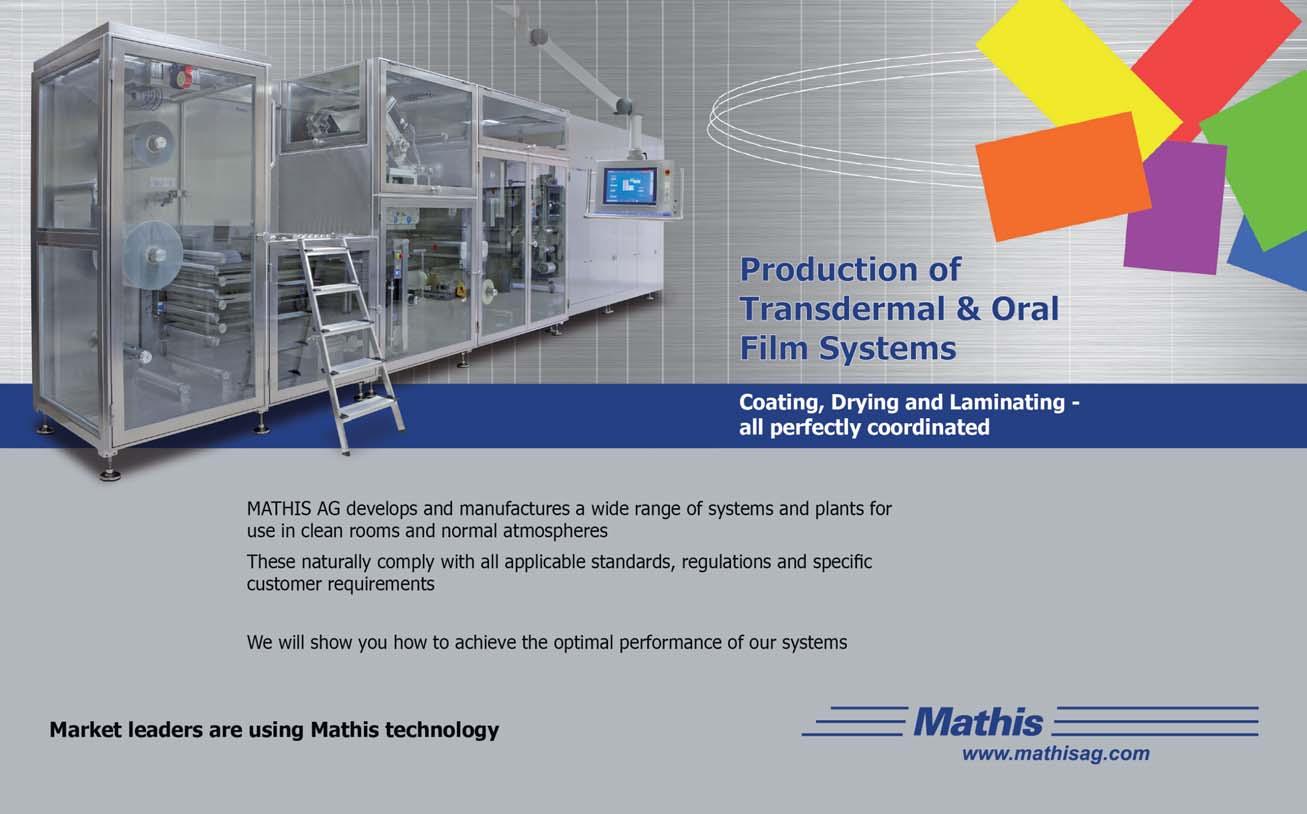
4 minute read
TECHNOLOGY Digitisation of IP: Acandid viewpoint
Dr Rajeev Singh Raghuvanshi, Secretary-cum-Scientific Director,Indian Pharmacopoeia Commission (IPC),speaks exclusively to Akanki Sharma and explains the various facets and advantages of digitising the Indian Pharmacopoeia (IP).Excerpts below:
IPC is planning to digitise the Indian Pharmacopoeia (IP). What advantages will it bring to the organisation itself as well as the industry stakeholders?
We have decided to digitise the IP because it has got several advantages, and a number of problems also get solved. Digitisation makes many things possible that we might not do easily today. The first and foremost is to increase our reach. Apart from it, we can also have enough flexible pricing for a digital product, which helps us in providing better services to the stakeholders in terms of the payments they make. For instance, many people today think that IP book is quite costly; digitisation will help in addressing this problem also. That’s because if prices are flexible, people can even start taking IP on a subscription basis.
Besides, for us, the benefit is that we can do a lot of research on the uses of IP. For instance, at present, we have no idea how someone, after purchasing the IP, brings it to use. There is no monitoring system at the moment regarding this. Furthermore, we can have a good research on the uses of IP and IP monographs. Ultimately, it helps us to know what advantages the stakeholders are getting from all that we are doing. Further, we will have an option of tracking every use of the product like which monograph was used the most, or which one was used less by stakeholders, etc. and then we can prioritise our work on the basis of the uses, which is a huge advantage. Then, we can offer our services in a better way because we know our customer better with the digital product.
In addition, it will also prevent counterfeiting of the physical copies of the IP.
That apart, we are also working on digitising the different processes of the Indian Pharmacopoeia Commission (IPC), too. That’s because when we run an institution, the work gets done on a physical basis in the government departments. We are trying to convert that whole physical process to digital process. We are talking to vendors to develop Enterprise Resource Planning (ERP) for IPC, so that our whole working process turns digital.
We are also trying to convert our library into a digital product. It’s still a thought process, though. We haven’t begun working on it yet. We have a rich library, and we want to convert it for stakeholders for online consultation. Once it happens, we will offer it to students; industries, especially Micro, Small and Medium Enterprises (MSMEs) because their resources are limited; research institutes, etc.
What is the current status of this digitisation process?
We have recently floated the tender. Our target is that we will finish this by the end of this financial year. Ultimately, we have to develop this product through the government’s system via the Government e Marketplace (GeM) tender, which further has its own procedures. Furthermore, since IP is a complicated product and not just a simple digital book, there are not many vendors in the market who can make this product as per our expectations. We have an expert committee including people from the industry who are experts in developing digital products, who will evaluate the vendors. So, there is a possibility that we may not get the required number of good vendors for the product, and there are a number of cycles that might take place to evaluate and select the right vendor.
What is the primary parameter that you have set for choosing these vendors? The most important thing is that we have asked the vendors to provide their solution architecture. Often, the small-scale vendors don’t have much knowledge about such complicated development, but they put it on GeM because, for them, it’s an opportunity by the government and they are keen to grab it. They don’t have their own internal expertise. So, we have asked for their solution architecture, which our technical committee (including a total of six members) will be evaluating before going any further.
Talking about digitisation, it is said that pharma industry lags behind most of the industries. What do you think are the primary reasons behind it?
Most of the big pharma companies are doing digitisation. The issue is more on the MSME side because they don’t have the skill and finances to do that, and their workforce is not trained. So, in the MSME domain, digitisation is almost zero. Except that, at present, over 50 per cent of the domestic pharma production takes place at MSMEs. So, that is one area where they need to take initiatives to solve these problems in partnership with maybe, the state governments, central government, Department of Pharma (DoP), or whosoever it is. However, this needs focus because MSMEs will face problems in digitisation. Big companies have already started doing it and many of them them have already done it. akanki.sharma@expressindia.com journoakanki@gmail.com
Besides, there is a historical reason behind pharma companies being laggards in terms of digitisation. This is because this industry had the lowest competition, historically; and, when competition is not there, people don’t think of innovations.
Tell us about the IPC's achievements in the past few years.
In the past one-and-a-half/two years, our visibility has increased. We have started talking to people more often. On the technical side, we are doing a number of changes in the IP. There are stakeholders who are appreciating the changes, and there are people who are not too enthusiastic about the process. A lot of changes happened in the IP also. Our inventory at the Intellectual Property Rights (IPRs) now ranks third in the world. In addition, we have over 1,000 reference materials in our inventory today, which is a huge increase in the inventory in the last two years (it’s almost more than double and even its usage has increased at such a scale).














OsmoTECH®XTSingle -SampleMicro-Osmometer

Nowavailable!
Best-in-classosmolalityperformance, designedwithyouinmind.
HIGHLIGHTEDFEATURES:
Offersthewidestrangeofosmolalitytesting(0–4000mOsm/kgH2O) Supports21CFRpart11,GMPandEUAnnex11compliance

MeetsPharmacopeiaosmolalitytestingguidelines

3Leveluseraccessandpasswordprotection
Storage:unlimiteddatastorageforaccess
Audittrail:Preserveunlimitedresultsandevents
Databasebackup,protectsyourdatawithautomaticormanualbackup
No.127,BussaUdyogBhavan,TokershiJivrajRoad,SewriWest,Mumbai-400015, Maharashtra,Landline:+91022-24166630Mobile:+919833286615








